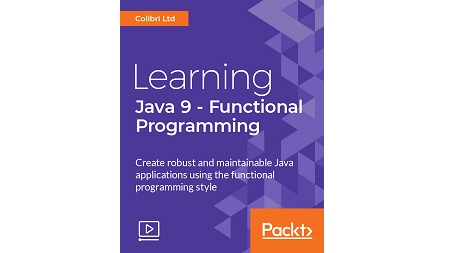
English | MP4 | AVC 1920×1080 | AAC 48KHz 2ch | 2h 03m | 331 MB
Learn functional programming with JAVA 9, through examples containing generic data
Functional programming is a programming paradigm, and it’s all about programming with functions! But this doesn’t explain the most important aspect: how FP is different from other paradigms, and what makes it a (potentially) better way to write programs. The paradigm makes programs easier to reason with because they’re deterministic, since one specific input will always give you the same output.
To kick-start this learning experience, we explain the use of generic data structures in Java, along with a number of practical examples, such as implementing a Pair class, and using a generic comparator function to sort a list of generic objects with an explanation of the need for generics, followed by practical use cases. Moving on from generics to functional programming, we explain the use of generic functions in Java, along with some common usage patterns. To conclude, we discuss what functional programming is, and the benefits we can get from using it, before moving on to a couple real-life examples. We start with a simple list of data points, before using a traditional for loop to first filter, sort, manipulate, and then finally reduce the list of data points. We will then write a similar example using functional programming, providing a perfect example of some of the benefits it provides when working with data sets.
This course will teach you one of the most powerful elements of the Java programming language, to help you start writing programs by coding the base functions needed and combining these functions into higher-level ones, repeating the process until you have a “single function” corresponding to the program you’re building. Given their transparency, they can be reused to build other programs without any modifications, which saves time and allows you to focus on the further development of your project. From learning how to write more readable functional code, to processing discrete data sets using the stream interface and then writing your own Lambdas, this course has it all!
What You Will Learn
- Start coding the required base functions and combine these functions into higher-level ones
- Have a single function corresponding to the program you’re building.
- Build other programs without any modifications to save time and allow you to focus on the further development of your project.
- Write more readable functional code, to process discrete data sets using the stream interface, then write your own Lambdas
Table of Contents
Generic Data Structures
1 The Course Overview
2 Introduction to Generic Data Structures
3 Generic Data Structures and When to Use Them
4 Using Generics to Create Custom Object Typed Data Structures
Generic Functions and Classes
5 Introduction to Generic Functions and Classes
6 When to Use a Generic Function – Common Patterns
7 Writing Our Own Generic Functions and Classes
Functional Programming
8 Introduction to Functional Programming
9 Functional Programming Concepts in Java 9
10 Streams and Parallel Streams
11 Mapping Datasets
12 Filtering Datasets
13 Complex Functional Programming – Flat map, and Reduce
Resolve the captcha to access the links!